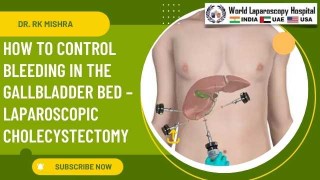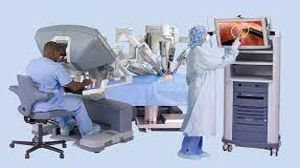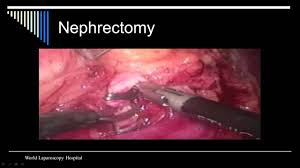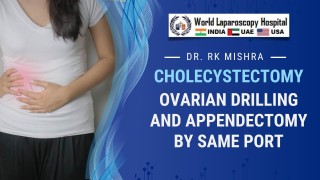How to use Laparoscopic Trocar, Graspers and Dissectors - Lecture by Dr R K Mishra
Add to
Share
256 views
Report
2 months ago
Description
Laparoscopic surgery has revolutionized modern surgical practice by offering minimally invasive techniques that reduce patient recovery time, minimize postoperative pain, and enhance surgical precision. Central to successful laparoscopic procedures is the correct use of instruments like trocars, graspers, and dissectors. In his insightful lecture, Dr. R. K. Mishra, a pioneer in minimally invasive surgery, provides a comprehensive guide on their proper use, ensuring both safety and efficiency during procedures. 1. Understanding the Laparoscopic Trocar The trocar is the gateway to the abdominal cavity during laparoscopic surgery. It provides access for the camera and instruments while maintaining a pneumoperitoneum. Dr. Mishra emphasizes: Types of Trocars: Bladed, bladeless, and optical trocars. Each has its specific use depending on patient anatomy and surgical requirement. Insertion Technique: Proper insertion requires a controlled angle, usually perpendicular to the abdominal wall, with awareness of underlying organs. Using the optical trocar allows direct visualization, reducing the risk of injury. Placement Strategy: Strategic positioning of trocars ensures optimal instrument triangulation and ergonomic handling. Dr. Mishra stresses preoperative planning and marking based on anatomical landmarks. 2. Using Laparoscopic Graspers Graspers are vital for holding, retracting, and manipulating tissues. Dr. Mishra outlines their proper use as follows: Selection of Grasper: Choose atraumatic or toothed graspers based on tissue type. For delicate tissues, atraumatic graspers minimize damage. Techniques for Safe Handling: Hold instruments like an extension of your hand. Avoid excessive force, which can cause tissue injury. Maintain a steady visual field through the camera to monitor tissue response. Tissue Retraction: Use graspers to provide clear exposure of the operative field. Dr. Mishra highlights the importance of adjusting traction according to tissue elasticity to prevent tearing or bruising. 3. Using Laparoscopic Dissectors Dissectors help in separating, mobilizing, or exposing tissues. Dr. Mishra explains: Types of Dissectors: Maryland, spatula, and curved dissectors each serve specific purposes. Selecting the right dissector improves precision. Dissection Techniques: Gentle sweeping motions and staying in the correct tissue planes reduce complications. Proper dissection involves constant visual monitoring and avoidance of blind maneuvers. Tissue Handling Principles: Always maintain counter-traction; dissect slowly and methodically to preserve surrounding structures. Dr. Mishra emphasizes combining sharp and blunt dissection techniques as needed. 4. Integrating Instruments During Surgery Dr. Mishra’s lecture underscores that mastery comes from coordinated use of trocars, graspers, and dissectors. Key points include: Ergonomic Handling: Position yourself and instruments to minimize fatigue and maximize precision. Instrument Triangulation: Correct placement of trocars ensures smooth instrument movement and optimal access to target tissues. Team Coordination: Effective laparoscopic surgery requires seamless coordination between the surgeon, camera operator, and assistants. 5. Safety Tips and Best Practices Always maintain pneumoperitoneum pressure within safe limits. Continuously observe tissue response to manipulation. Ensure instruments are intact and functional before starting the procedure. Avoid excessive force with graspers and dissectors to prevent tissue injury. Conclusion Dr. R. K. Mishra’s lecture on using laparoscopic trocars, graspers, and dissectors serves as a vital educational resource for both beginners and experienced surgeons. Mastery of these instruments is not just about technical skill, but also about understanding tissue dynamics, ergonomics, and patient safety. With practice, proper planning, and adherence to these principles, laparoscopic surgeons can achieve precise, safe, and efficient outcomes in minimally invasive surgery.
Similar Videos






